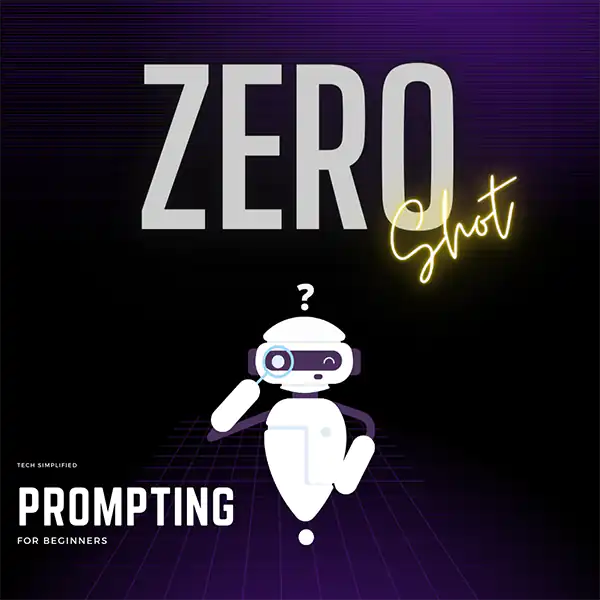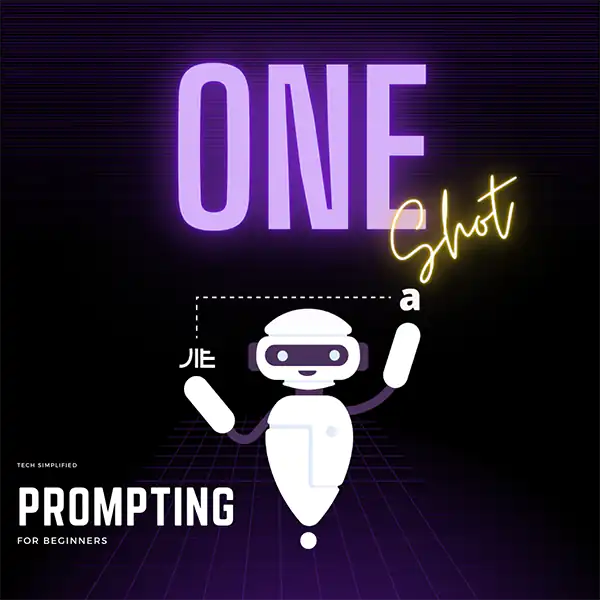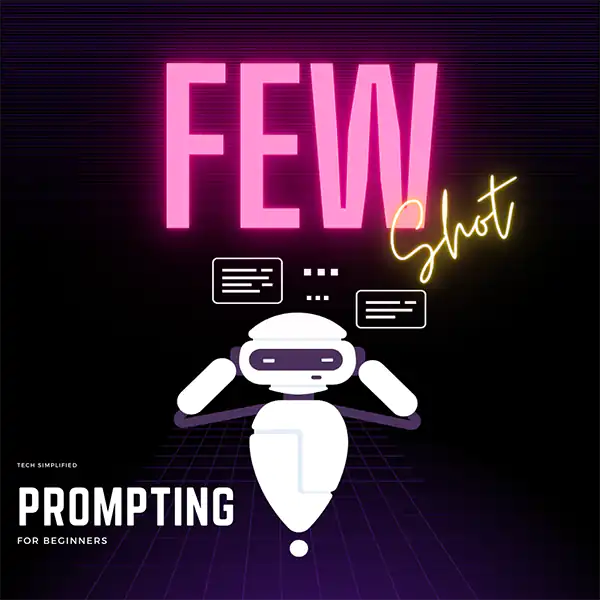Prompt Engineering 101: Getting What You Want from AI
In recent years, large language models like OpenAI’s GPT have revolutionized the AI landscape, making effective communication with these models more crucial than ever. However, to unlock the full potential of AI, we need to learn how to communicate effectively with it. That’s where prompting comes in! In this blog post, we’ll dive into the exciting world of prompt engineering, exploring various prompting techniques and how to get the best results from an AI like ChatGPT using examples from email and economics.
What is Prompt Engineering?
Prompt engineering is designing and refining prompts to get the most accurate and relevant responses from AI systems. It involves optimizing the phrasing, providing context, or using specific keywords to help AI models understand your intent and generate better answers. In this guide, we’ll go through zero-shot, one-shot, and few-shot prompting techniques and see how they can be applied to our examples.

What is Zero Shot Prompting?
Zero-shot prompting is a technique where you provide a single prompt without any examples or context. The AI relies solely on its pre-trained knowledge to generate a response. This can be useful for straightforward tasks but may yield inaccurate results for more complex queries.
Best used for:
What is One Shot Prompting?
One-shot prompting involves providing the AI with a single example alongside the prompt. This example serves as a reference for the AI to understand the desired format or type of response. One-shot prompting can help improve the AI’s understanding of the task and often yields better results than zero-shot prompting.

Best used for:

What is Few Shot Prompting?
Few-shot prompting involves providing multiple examples alongside the prompt, giving the AI more context and guidance on the expected output. This approach can be advantageous when dealing with intricate or subtle tasks that demand a more profound comprehension of the issue.
Best used for:
Prompt Engineering Examples
Let’s explore examples using zero-shot, one-shot, and few-shot prompting techniques, focusing on email and economics-related scenarios.
Our end goal is to write a professional email to one of our most important clients, requesting a meeting to explain the delay and increased costs of their order due to a shortage in the supply chain.
We’ll split the task into two parts:
- crafting a personal touch and tone for our top-priority client
- formulating a strategy to explain the economics-related topic.
Zero Shot Examples
Email:
- “Write a professional email requesting a meeting with a top client to discuss order delays and increased costs.”
Economics:
- “Explain the impact of supply chain shortages on product costs and delivery times.”
One Shot Examples
Email:
- “Write a professional email requesting a meeting with a top client to discuss order delays and increased costs. Example: ‘Dear [Client], I hope this message finds you well. We value your business and would like to schedule a meeting to discuss some recent developments that may affect your order…'”
Economics:
- “Explain the impact of supply chain shortages on product costs and delivery times. Example: ‘When there is a shortage in the supply chain, it can lead to increased costs for raw materials and longer lead times for production, ultimately resulting in higher prices and delayed deliveries for customers…'”
Few Shot Examples
Email:
- “Write a professional email requesting a meeting with a top client to discuss order delays and increased costs.
- Example 1: ‘Dear [Client], I hope this message finds you well. We value your business and would like to schedule a meeting to discuss some recent developments that may affect your order…'”
- “Example 2: ‘Hello [Client], I trust you are doing great. In light of some recent challenges we’ve faced, we’d like to request a meeting with you to discuss the status of your order and potential adjustments to costs and timelines…'”
- “Example 3: ‘Hi [Client], I hope you are well. We’ve encountered some unforeseen issues that have impacted our production process, and we’d like to discuss how this might affect your order, including the costs and delivery times…'”
- Example 1: ‘Dear [Client], I hope this message finds you well. We value your business and would like to schedule a meeting to discuss some recent developments that may affect your order…'”
Economics:
- “Explain the impact of supply chain shortages on product costs and delivery times.
- Example 1: ‘When there is a shortage in the supply chain, it can lead to increased costs for raw materials and longer lead times for production, ultimately resulting in higher prices and delayed deliveries for customers…'”
- “Example 2: ‘Supply chain disruptions can cause significant delays and cost increases, as manufacturers struggle to source the necessary materials and components. This can lead to higher prices for consumers and longer wait times for product deliveries…'”
- “Example 3: ‘A bottleneck in the supply chain can result in increased production costs and extended delivery times, as suppliers face difficulties obtaining raw materials and manufacturers deal with the subsequent shortages. This can have a direct impact on customers in the form of higher prices and longer waiting periods…'”
- Example 1: ‘When there is a shortage in the supply chain, it can lead to increased costs for raw materials and longer lead times for production, ultimately resulting in higher prices and delayed deliveries for customers…'”
How does Prompting work?
Prompt engineering is the art of iterative refining and experimenting with prompts to effectively communicate with AI models and obtain the most accurate and relevant results. Various prompt engineering tools can help you refine and test your prompts for better results.
Getting the Desired Result
To achieve our goal of writing an exclusive email to our VIP client, we’ll pick the best strategy for the email part and the best strategy for the economic explanation. We could choose the few-shot prompting approach for the email part, as it provides multiple examples that help us convey the desired tone and personal touch. The one-shot prompting technique may be sufficient for the economic explanation. It gives the AI a clear example while allowing it to generate a relevant and concise description.
Combining the chosen strategies, we can craft the complete email as follows:
Dear [Client],
I hope this message finds you well. As you are one of our most important clients, we want to keep you informed and address any concerns you may have. We value your business and would like to schedule a meeting to discuss recent developments that may affect your order.
Due to unforeseen shortages in the supply chain, we are experiencing increased costs for raw materials and longer lead times for production. When there is a shortage in the supply chain, it can lead to increased costs for raw materials and longer lead times for production, ultimately resulting in higher prices and delayed deliveries for customers like you. We understand this might impact your business and are committed to finding a solution together.
At your earliest convenience, please let us know when you would be available for a meeting so we can discuss the situation in more detail and explore potential adjustments to costs and timelines. We appreciate your understanding and look forward to working closely with you to minimize the impact of these challenges on your order.
Thank you for your continued support, and we’ll be in touch soon.
Best regards,
[Your Name]
By applying prompt engineering techniques, we have created a professional and well-crafted email that addresses the Client’s concerns while maintaining a personal touch. Combining few-shot prompting for the email’s tone and one-shot prompting for the economic explanation has allowed us to achieve the desired result.
Why is Prompt Engineering Important?
Prompt engineering is crucial for obtaining the best possible results from AI models. By optimizing your prompts, you can:
- Save time and resources by reducing the need for manual corrections or follow-up questions.
- Increase the accuracy and relevance of AI-generated responses.
- Improve the user experience by making AI systems more efficient and effective.
What is beyond Prompt Engineering?
Prompt tuning, also known as prompt fine-tuning or model fine-tuning, is an advanced technique that involves adjusting the AI model’s parameters to improve performance for specific tasks or domains.
This process usually requires training the model on a smaller dataset containing examples relevant to the desired application. However, as users of AI models like ChatGPT, we don’t usually have access to prompt tuning or fine-tuning, as these processes are performed by the Engineers or Data Analysts who have access to the AI model, such as the experts at OpenAI.
Despite this, we still have the power to augment the AI model’s knowledge using our own data through a different approach—embeddings. By transforming our data into numerical representations or embeddings, we can feed this information into the AI model, essentially extending its knowledge base with our own specifics.
This means that even if ChatGPT’s training data stops at a certain point in time, we can still provide it with up-to-date information, company-specific knowledge, or any other data that is crucial for our needs. So, while we might not have direct control over fine-tuning, we can still leverage embeddings to tailor the AI model’s capabilities to our unique context.
What Effect Can Prompt Tuning Have on Prompt Engineering?
Prompt tuning can significantly impact prompt engineering, as it can enhance the AI model’s understanding of specific prompts or types of prompts. After prompt tuning, some prompts may work better or worse than before, requiring users to adapt their prompt engineering strategies accordingly.
Are there any financial Opportunities with Prompting?
The rise of AI has led to an increase in prompt engineering jobs as companies seek experts who can effectively communicate with AI models. As the demand for AI expertise grows, so does the prompt engineering salary, making it a lucrative career path for those interested in AI.
Final Thoughts
Prompt engineering is a dynamic and exciting field that empowers users to communicate more effectively with AI systems, unlocking their full potential. By experimenting with various prompting techniques and continuously refining your prompts, you can achieve impressive results and harness the power of AI for a wide range of applications.
Suppose you’re interested in learning more about prompt engineering. In that case, plenty of resources for prompt engineering are available online, including tutorials, forums, and dedicated communities or blogs.
FAQ
This prompt engineering guide explores techniques to get the most out of AI models like GPT. Here are some of the most relevant questions and answers about prompting.

Graz is a tech enthusiast with over 15 years of experience in the software industry, specializing in AI and software. With roles ranging from Coder to Product Manager, Graz has honed his skills in making complex concepts easy to understand. Graz shares his insights on AI trends and software reviews through his blog and social media.







